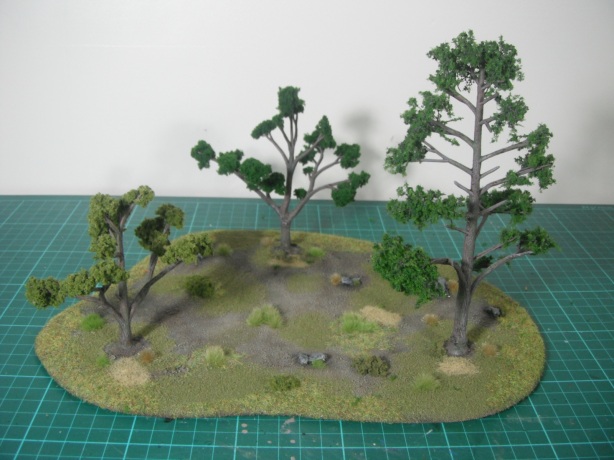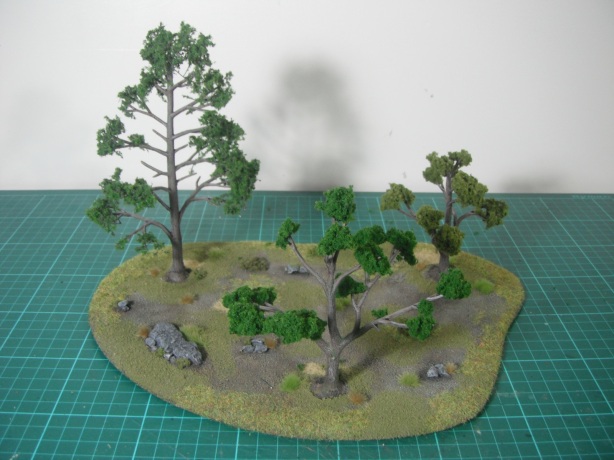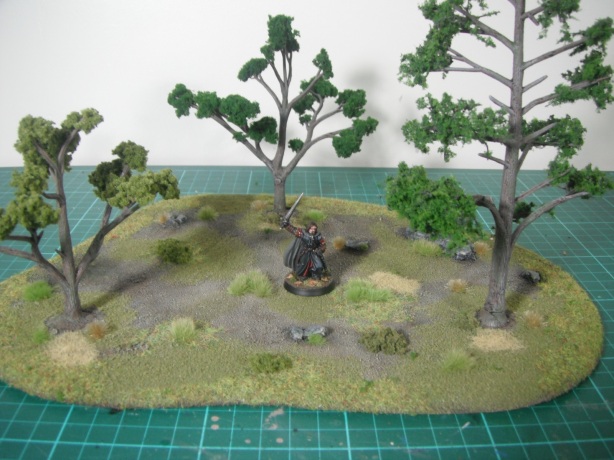
A lot of people on Twitter have asked me how I went about painting my Sigmarite Mausoleum and so I thought I would post the following quick guide. The colour scheme is based on the box art and follows the same basic colours as suggested on the box. The most important thing here is to paint smart and follow a set order of painting which will make painting a large amount of scenery quicker and more efficient.
Step 1

Spray the walls Mournfang brown.
Step 2

Apply a second coat of spray paint. This time more lightly using Incubi Darkness. The aim here is to leave some of the brown showing in the recesses.
Step 3

Wash the whole thing with Agrax Earthshade. Not only does this provide shading but it also helps to tie the two base colours together.
Step 4

Apply a heavy drybrush of Thunderhawk Blue (available as a Dry paint), gradually building up the colour.
Step 5

Pick out any skulls with Rakarth Flesh. Basecoat the ground Stormvermin Fur and pick out any rocks using Gorthor Brown and Mechanicus Standard Grey.
Step 6

Shade the skulls, ground and rocks using Agrax Earthshade.
Step 7

Lightly drybrush the whole model using Terminatus Stone.
Step 8

Now it’s time to pick out the details. I used Deathworld Forest for the plants, Balthasar Gold for the bronze areas, Retributor for the gold and Leadbelcher for the silver.
Step 9

Wash the plants with Athonian Camoshade and wash all of the other details Agrax Earthshade.
And that’s it. I might go back and add more highlights, drybrush the plants green and pick out the roses but for now it’s more than ready for the tabletop.
In my next post I’ll tackle painting verdigris.














































